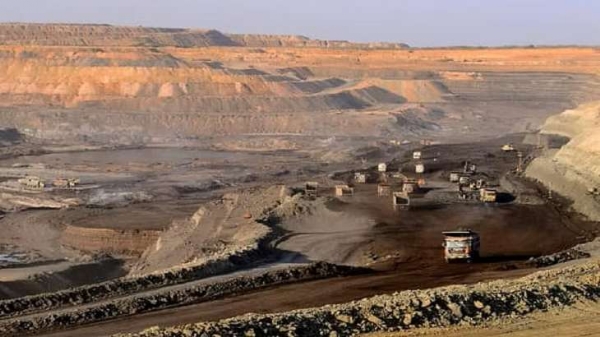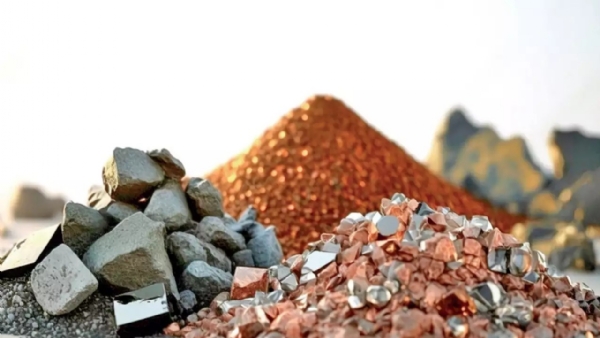NB Explains | Which rare Earth elements' deposits have been found in Andhra Pradesh? How it could impact India's economy?
08 Apr 2023 12:07:31
In a major development, the Hyderabad-based National Geophysical Research Institute has found large deposits of 15 rare earth elements (REE) in Andhra Pradesh's Anantapur district. The recent discovery of large deposits of 15 rare earth elements in Andhra Pradesh has sparked excitement in India's economic and geopolitical circles.

Before going ahead first one need to understand what is REE.
They are a set of seventeen metallic elements. The 17 rare earth elements include the 15 Lanthanides (atomic numbers 56- which is lanthanum -to 71 in the periodic table) plus scandium (atomic number 21) and Yttrium(39).
REEs are classified as light rare-earths(LREE), intermediate and heavy RE elements (HREE). Currently, some REEs are available in India — such as Lanthanum, Cerium, Neodymium, Praseodymium and Samarium, etc.

These minerals have unique magnetic, luminescent, and electrochemical properties and thus are used in many modern technologies, including consumer electronics, computers and networks, communications, health care, national defence, clean energy technologies etc.
Which rare Earth element deposits have been found in Andhra Pradesh?
NGRI scientists were conducting a survey for non-traditional rocks like syenites when they made the significant discovery of the minerals in the lanthanide series. The elements identified included allanite, ceriate, thorite, columbite, tantalite, apatite, zircon, monazite, pyrochlore euxenite and fluorite.
NGRI scientist PV Sunder Raju said, "Zircon of varying shapes was observed in Reddypalle and Peddavadaguru villages."

"The monazite grains showed high-order multiple colours with radial cracks within grains, suggestive of the presence of radioactive elements," he added. Raju said that more feasibility studies will be conducted by deep drilling to learn more about these REEs.
These elements are also used in clean energy, aerospace, defence and in manufacturing permanent magnets -- a key component of modern electronics -- wind turbines, jet aircraft and several other products. REEs are widely used in high technology because of their luminescent and catalytic properties. The assessment of REEs with implications for metallogeny is now underway at alkaline syenite complexes in AP, NGRI scientists said, as reported by the Times of India article.
Lithium falls in the critical resource category, which was not earlier available in India and we were dependent on its 100 per cent import.
Earlier in February, the Union Government said that 5.9 million tonnes of lithium reserves have been found for the first time in the country in Jammu and Kashmir.
Lithium is a non-ferrous metal and is one of the key components in EV batteries. Union minister Nitin Gadkari recently said if India can use the recently discovered reserve of lithium in Jammu and Kashmir, it can become the world's number-one automobile manufacturer in the electric vehicle segment.
Lithium is a light metal. Its density is lower than that of water, so it can float. It was not formed naturally on Earth but is a cosmic metal.
It points out that some scientists believe that when high-energy cosmic rays slam into heavier elements like carbon and oxygen in interstellar space, breaking them up into lighter atoms, lithium could have been created. In 2020, astronomers discovered that a certain type of red giant stars also become lithium factories at the end of their lives, based on a survey of hundreds of thousands of stars.
Lithium is a highly reactive metal which means that it can hold a lot of energy. As per reports, using lead-acid technology, it takes 6 kg to store the same amount of energy that a 1 kg lithium-ion battery can handle.
Also, lithium can hold its charge for longer. A Lithium-ion battery loses only a 5 per cent charge per month compared with a 20 per cent loss in a Nickel Metal Hydride (NiMH) battery. And Lithium can withstand thousands of recharge cycles.
How it could impact India's economy and strategic interests
Against the backdrop of the fraught relations between China and India, the discovery of a deposit of rare earth elements has come as a relief for the latter. Over the years, China has repeatedly used its monopoly in the rare earth market for furthering its geopolitical agendas. For instance, in 2010, Beijing blocked Japan's access to rare earth elements over Tokyo's detention of a Chinese fishing trawler captain.
Recently, as the global ‘China-plus-one’ strategy adopted post the Covid-19 pandemic caused massive supply-chain disruptions, a group of Western nations are cooperating to develop alternatives to China to ensure key industrial supplies. A new US-led partnership initiative of 11 nations aims to bolster critical mineral supply chains.
Moreover, this discovery also comes at the time when India is working through its diplomatic channels to fetch an entry into the Mineral Security Partnership.